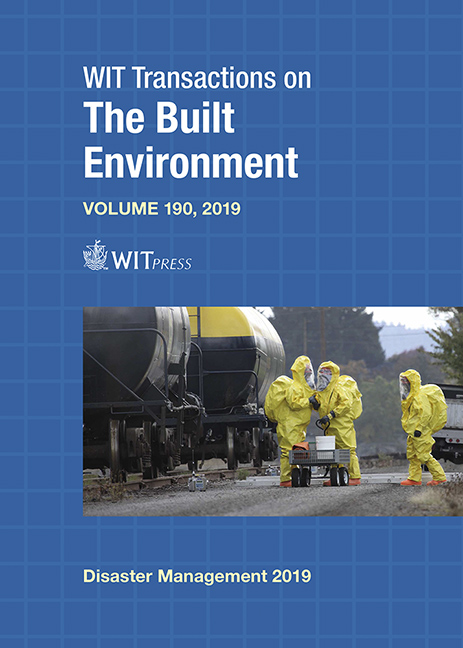APPLYING THE STAPLEE CRITERIA TO DEVELOP NATURAL HAZARDS MITIGATION ACTIONS: CASE STUDY AND LESSONS LEARNED IN NORTHERN PUERTO RICO
Price
Free (open access)
Transaction
Volume
190
Pages
11
Page Range
125 - 135
Published
2019
Size
963 kb
Paper DOI
10.2495/DMAN190111
Copyright
WIT Press
Author(s)
JAVIER VÉLEZ AROCHO, CARLOS MAYSONET, JOSÉ L. VALENZUELA
Abstract
A key strategy to identify risks associated with natural disasters is the use of appropriate criteria that allow protection of life and property from future hazard events. With the effects of climate change increasing it is important to effectively identify the vulnerability of communities, as well as properties of the municipalities that are exposed to natural hazards. Using the correct criteria could provide a base for the development and implementation of mitigation measures aimed at reducing the loss of life and property. Implementing these measures could help reduce the economic and social impact of the natural hazards that affect communities in Puerto Rico. The use of inadequate planning in the design of mitigation activities may not be enough nor sustainable in the long term, when addressing natural hazards in regions like the Caribbean. Hurricanes, earthquakes, tsunamis, droughts, flooding and coastal erosion have already claimed the lives of hundreds of people and throughout the last decade, have caused over $100 billion in damages across the region. Based on this scenario, a case study is featured using the United States Federal Emergency Agency’s (FEMA) STAPLEE Criteria. STAPLEE is an acronym for the seven criteria used to conduct a feasibility review. These criteria are: Social, Technical, Administrative, Political, Legal, Economic, and Environmental feasibility. After describing the method, the paper focuses on the reliability of the process and the results obtained in a coastal municipality in northern Puerto Rico. Twenty-three mitigation actions were developed to address the most pressing natural hazards affecting the municipality. The use of the criteria addresses the challenge developing the appropriate mitigation actions at the local level while complying with the archipelago-wide approach developed by the state government of Puerto Rico.
Keywords
multi-hazard mitigation in Puerto Rico, FEMA, community resilience, climate change, planning, coastal hazards




